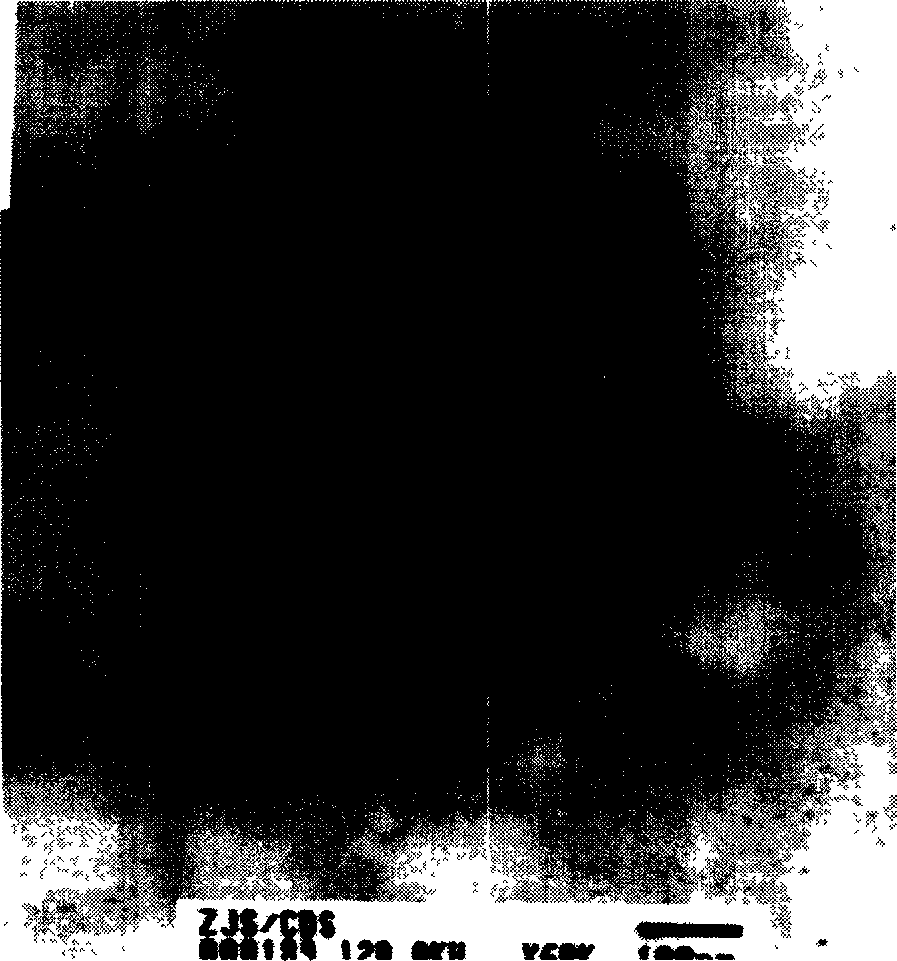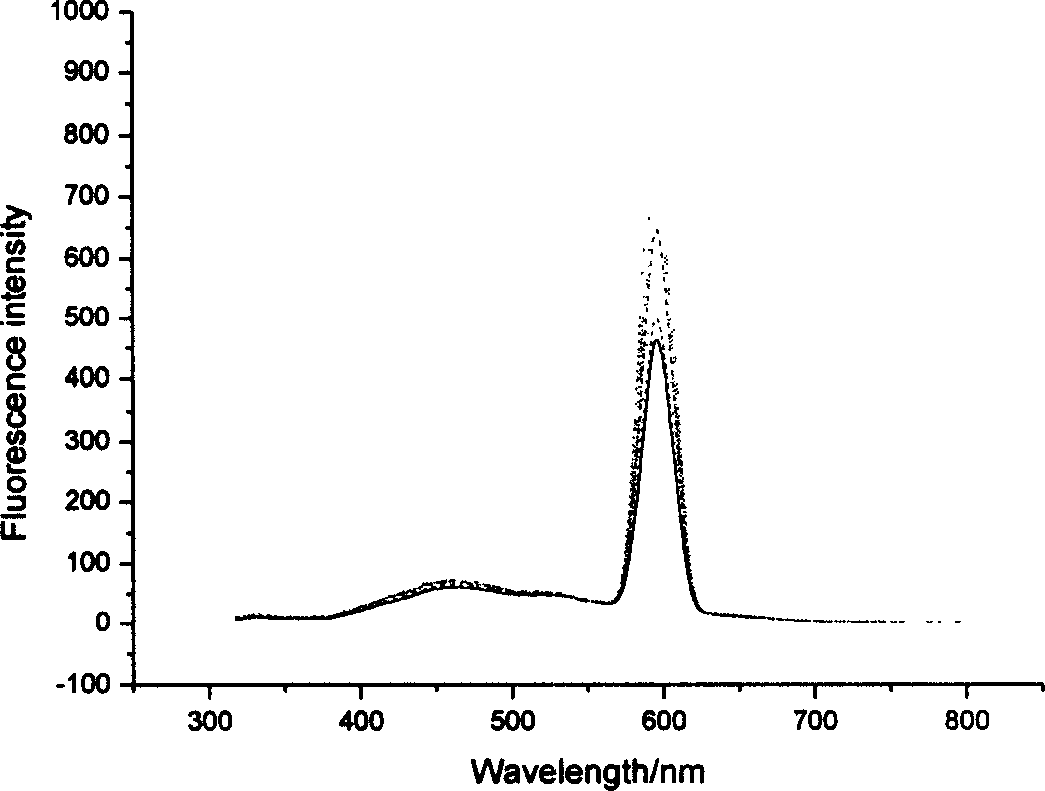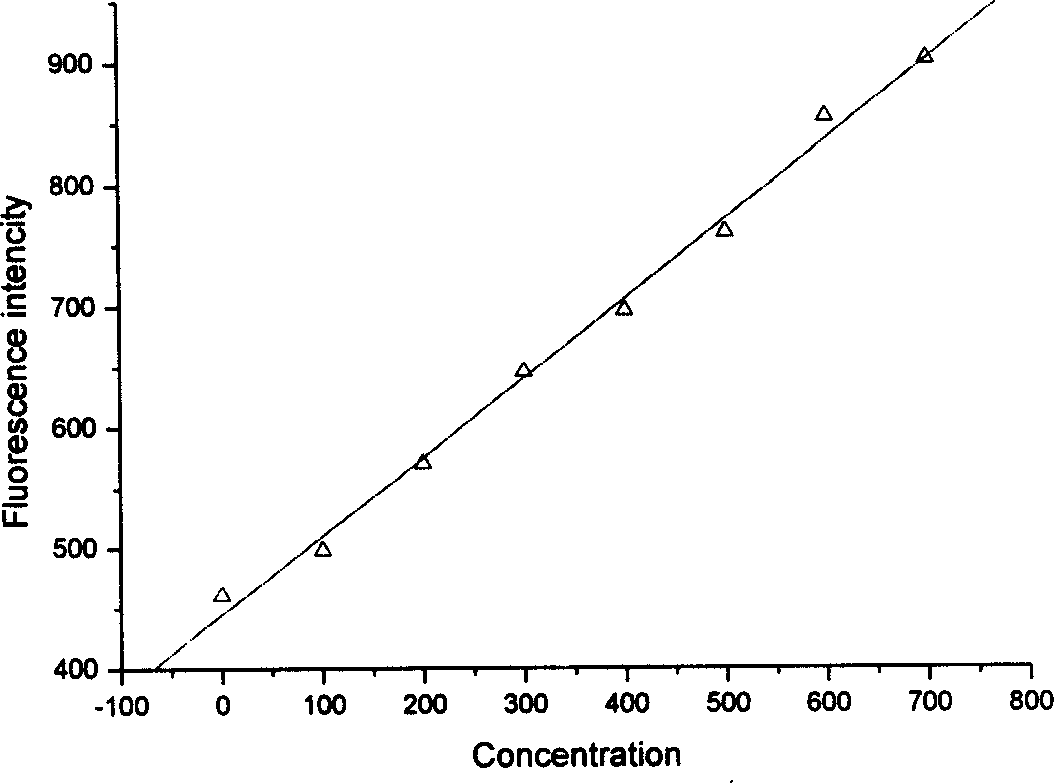Wet-solid phase reaction preparation method for cadmium sulfide semiconductor nanocrystalline
A semiconductor and nanocrystal technology, applied in the field of preparation of cadmium sulfide nanocrystals, can solve the problems of different probe molecular fluorescence difficulties, difficulty in exciting multiple components at the same time, difficulty in detecting multiple components, etc., to achieve good development and Application prospect, no agglomeration phenomenon, high yield effect
- Summary
- Abstract
- Description
- Claims
- Application Information
AI Technical Summary
Problems solved by technology
Method used
Image
Examples
Embodiment 1
[0019] Example 1, at room temperature and under normal pressure, mix thioglycolic acid and cadmium chloride in a molar ratio of 2:1, grind in a mortar for 30 minutes, add deionized water to wash off excess thioglycolic acid, filter, and use the filter cake Wash with ionized water. Mix the filter cake and sodium sulfide in a molar ratio of 3:2, grind in an agate mortar to obtain a light yellow solid, dissolve it in water, add acetone to settle the CdS sol, filter, and wash. Vacuum dry. Get nano CdS crystals. Observed under a transmission electron microscope, the particle size of the nanoparticles is between 3-5nm, the particle distribution is uniform, and there is no agglomeration phenomenon. as attached figure 1 shown.
Embodiment 2
[0020] Embodiment 2 is substantially the same as Example 1, but the mol ratio of mercaptoacetic acid and cadmium chloride mixing is 1.8: 1; the mol ratio of filter cake and sodium sulfide is 1: 2; The solvent used for settling is ether.
Embodiment 3
[0021] Embodiment 3 is substantially the same as Example 1, but the mol ratio of mercaptoacetic acid and cadmium chloride mixing is 2.2: 1; the mol ratio of filter cake and sodium sulfide is 3.5: 2.
PUM
| Property | Measurement | Unit |
|---|---|---|
| particle diameter | aaaaa | aaaaa |
Abstract
Description
Claims
Application Information
 Login to View More
Login to View More - R&D
- Intellectual Property
- Life Sciences
- Materials
- Tech Scout
- Unparalleled Data Quality
- Higher Quality Content
- 60% Fewer Hallucinations
Browse by: Latest US Patents, China's latest patents, Technical Efficacy Thesaurus, Application Domain, Technology Topic, Popular Technical Reports.
© 2025 PatSnap. All rights reserved.Legal|Privacy policy|Modern Slavery Act Transparency Statement|Sitemap|About US| Contact US: help@patsnap.com



